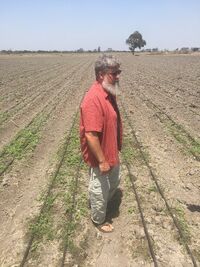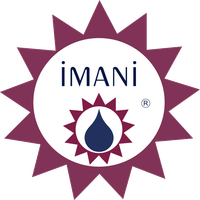
Aromatherapy 101
Aromatherapy is the use of natural essential oils from aromatic plants for therapeutic purposes. It includes simply smelling the oils, but also involves the application of oils to the body in a variety of ways.
What are Essential Oils?
Essential oils are the volatile oils that are produced by aromatic plants. They are the quintessential expression of the plant. Imagine the growing season of the plant; the sunshine, rain, wind, soil and environment all combine to produce the oil in the plant.
How are Essential Oils Produced?
Ideally, aromatic plants are harvested when the essential oil is at its peak concentration in the flower, leaves, root, or peel depending upon where the plant stores its oil. After cleaning and sorting, the aromatic plant material is loaded into a still for the steam distillation process. Water is heated and rises through the plant material, helping to evaporate the essential oils that are carried out with the steam. As the steam condenses, the oil and water naturally separate. Typically, the oil floats and is skimmed off the surface of the water.

More than pure
What makes the difference in quality?
Medicinal quality essential oils are more than pure. Just because an essential oil is 100% pure doesn't mean it is meant for Aromatherapy. The truth is that purity is a relatively easy standard to meet, but the quality of pure essential oils depends on several factors.
The soil.
Plants grow best with an optimum pH balance and the right nutrients in the soil. The optimum soil mix is preferably attained through organic methods, but, commercially, is attained through chemical fertilizing methods.
The seed.
Seeds are harvested from plants. If a plant has a history of producing excellent, vigorous plants with good yield, those seeds will be preferred. Commercially produced seeds are subjected to chemical fertilizing and pesticides, if not the seeds themselves, the plants that produce them.

The growth.
Plants must be protected from weeds, pests and disease. This can be accomplished through chemical pesticides, or through a more intimate understanding, by meeting the needs of each plant to keep its strength against certain diseases. The introduction of friendly insects, or birds, etc. can be used to reduce the population of harmful insects. Weeding may be done by hand to avoid the use of herbicides.
The harvest.
Each plant has a peak time for harvest within the season, but is also particular to the time of day. The rose, for optimum yield, must be harvested during the dawn, before the sun rises. As soon as the sun rises, the rose naturally releases its fragrance into the air. The yield resulting from distillation of such roses is significantly reduced. Careful oversight by an experienced grower helps ensure a good harvest.
The preparation.
Plants may be harvested by hand or by machine. For an exceptional quality oil, harvested plant material is inspected and sorted as the still is loaded. Any dead or foreign material, unwanted plants, or portions thereof, are removed so that only the premium material is loaded into the still. The importance of this step cannot be overrated. The juniper berry, for example, yields the finest and the safest oil; however, juniper needles have a higher yield. If a portion of the distillation includes needles, the yield will be much higher, resulting in a lower priced, but inferior oil.

The distillation.
Good distillation begins with good water from the earth and not from the tap. During distillation, temperature and pressure can be adjusted. High temperature and pressure are used commercially because the small loss of constituents from the heat does not outweigh the economic value of rapid distillation. Quality distillation requires a slower, lower temperature process that maintains the subtle and volatile components of the oil. The retention of the widest range of naturally occurring constituents fundamentally makes the difference between medicinal quality and commercial essential oils.
The handling.
After capturing the essential oil from steam distillation, commercial oils are often subjected to a standardization process. Essential oils have a worldwide market and are traded by the barrel commercially to large food and other manufacturers. These customers expect a consistent essential oil for their manufacturing process. They develop specifications for percentages of the main components that the suppliers must meet in order to make the sale. If a specification requires 42% linalol acetate in Lavender, for example, and the distillation produces 45%, then 3% is extracted and saved to be added to another batch whose linalol acetate is below 42%. Do you see how this oil is still 100% pure? Yet this standardization moves away from the natural state of the oil produced by the plant. When the oils are preserved in their natural state without standardization, they are referred to as “in-totum”. Medicinal quality essential oils are in-totum and while they may vary from batch to batch, they are presented as nature intended.
The distribution.
It is certainly important that no one in the chain of distribution adds any adulterants or diluents to the oils, but there are even more subtle factors that I believe can affect the quality of an essential oil. Essential oils have an uncanny intelligence to them. They have a manner of making their way into the hands of the right people. The best oils seem to engender personal growth in the people who come in contact with them. I have seen people who have a strong identity with their problems repel from the oils. Those who are ready to change are drawn to them.

Everything matters
It is profound to contemplate the amount of energy that essential oils represent. Beginning from only a seed, the elemental forces of the sun, water, wind and earth develop and shape the plant through its growing season. Space, time and effort is spent by those devoted to growing, harvesting and distillation. A large amount of aromatic plant material is required to produce a relatively tiny amount of oil. The finally, the oils come from all over the planet to one location and are attainable by almost anyone. It is simply amazing!

How Essentials Oils are used
Inhalation.
The simplest and mildest form of application is to open the cap and smell an essential oil. Inhalation can be beneficial for its stimulating or relaxing effects, since the limbic system is directly influenced by signals from the olfactory nerves. Olfactory nerves are located in your nose and the process of smelling is referred to as “Olfaction” or the “Olfactory Process.” Diffusion is another a form of inhalation application, but can have additional benefits, such as cleansing the air in a larger environment. While there are different types of diffusers, they fall into one of two basic methods of diffusion. They either evaporate or nebulize the oil. An evaporative diffuser is normally less expensive and uses heat or air to force the evaporation of the oil into the environment. A nebulizing diffuser also uses air, but rather than forcing evaporation, the air is used to turbulently break up the oil into very fine molecules, resembling smoke, that is projected into the environment.
Cutaneous.
When essential oils are applied to the body, whether diluted with a carrier or applied “neat” (undiluted), it is considered a cutaneous application. This can be done by applying a drop of oil to the wrist or other pulse point, by massaging onto the feet, by full body massage, as well as by using essential oils in a bath. Among the most common reasons for cutaneous applications are pain relief and relaxation.

Mucosal.
This form of application blurs the line between cutaneous and internal use. It is a more intimate and focused application that should be approached with a higher level of caution and understanding. With proper knowledge, essential oils are utilized for oral, nasal, vaginal and rectal application. Most mucosal applications require dilutions and should be administered sensibly by those with more than just casual knowledge.
Ingestion.
While much literature exists for the cutaneous application of essential oils, research conducted in France has been focused on the ingestion of essential oils. Of primary interest is the infection fighting capacity of essential oils. This level of use must again be approached sensibly. Some oils should not be used internally under any circumstance, others should be avoided by people with certain conditions, such as high blood pressure and epilepsy, or during pregnancy. However, realizing that you are using a little essential oil when you flavor an Italian dish with Basil and Oregano, you may begin to recognize certain oils for their potential nutritional value. For oils that are GRAS (Generally Regarded as Safe), the rule of thumb is 1-3 drops, 1-3 times a day for a period of 3 days to 2 weeks.

"Treatment comes from the outside, healing comes from within."
-Andrew Weil
Perhaps the most important thing to understand in natural healing is that our immune system is intelligently designed. It works to keep us healthy, in spite of the abuse that our bodies endure from daily stress, lack of good nutrition and toxicity.
In natural healthcare, It is often less vital to specifically test and diagnose an ailment, because the natural approach to healing is to strengthen the immune system by optimizing nutrition, reducing toxicity and managing stress. This simple solution is far from a "one size fits all" approach since every individual has a unique combination of nutritional, toxicity and stress factors.
Essential oils can be an important facet of natural healing with their well documented history of fighting infection and reducing inflammation in harmony with, rather than fighting against, our immune system.
Essential oils are not a replacement for a pharmaceutical medication. We would not say "take this instead of that"; however, if by supporting your immune system your body becomes stronger, you and your doctor can determine if your need for a particular medication may be reduced.
We believe that God has blessed us with a host of beneficial botanicals whose intelligence and complexity is unmatched in a laboratory. We have personally experienced the benefits of essential oils and use them everyday.
Please make responsible and informed choices
We encourage you to exercise personal judgement and common sense when using essential oils for therapeutic purposes. Your personal health choices are your right and your responsibility.
